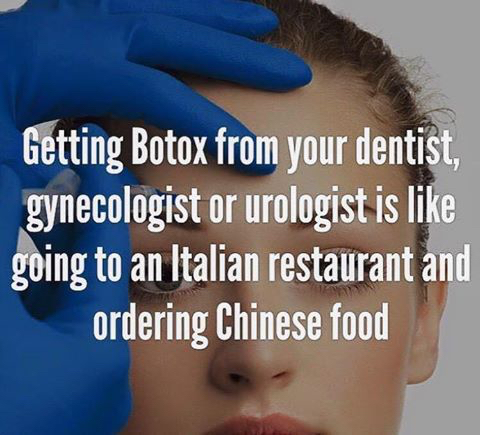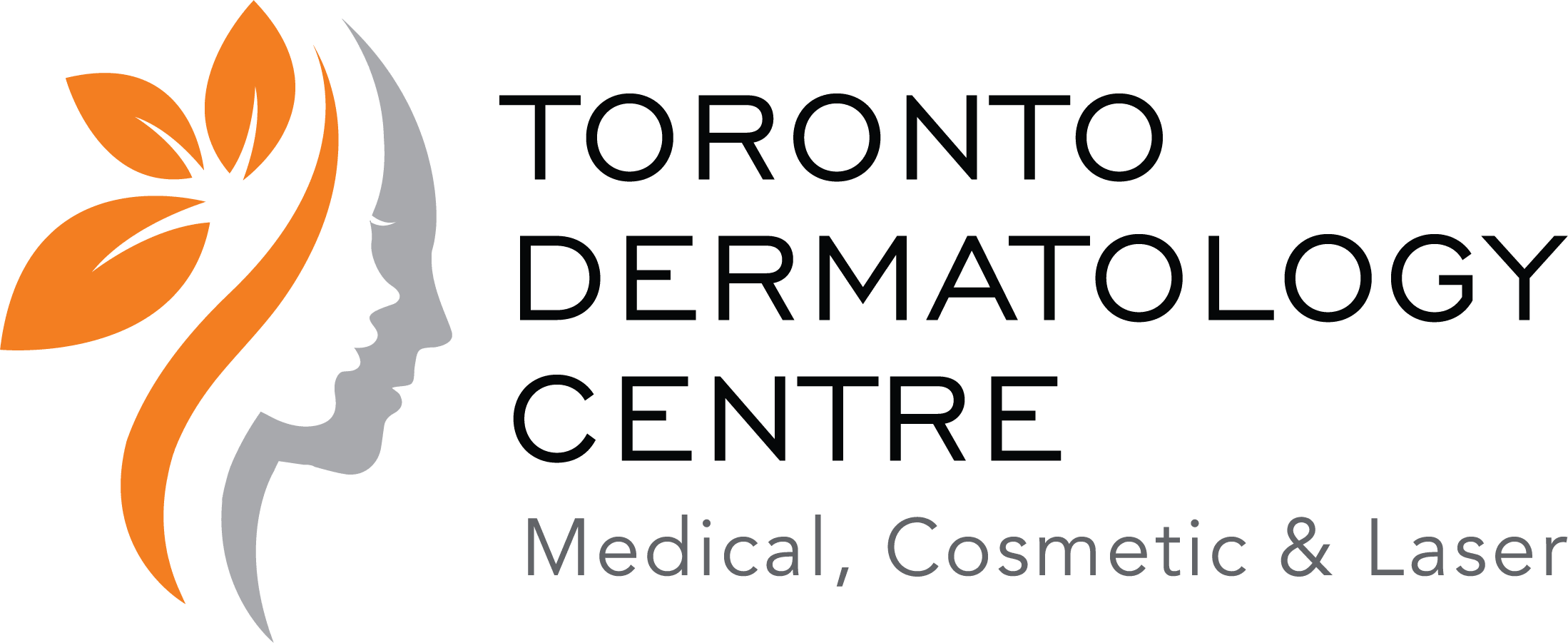Check it out, Cyndi Lauper talking about her psoriasis. Did you know other famous people have had psoriasis, including: Art Garfunkel, Kim Kardashian, LeAnn Rimes, Phil Mickelson, John Updike, and many more. Thankfully at Toronto Dermatology Centre, we’re at the cutting edge of psoriasis diagnosis and treatment, providing the best treatment options available for our psoriasis patients.
Category: Our Blog
Emily Ferraro, Medical Esthetician at Toronto Deramtology Centre talks about the Cutera Laser Genesis & Excel V.
Click below to view!
Our expert dermatologist Dr. Anatoli Freiman is interviewed by Global National News about new trends in skin care and the concept of multi-masking – read more here.

Psoriasis is a skin condition that affects about 2% of the population. It features red, thickened areas with silvery scales, most often on the scalp, elbows, knees, and lower back. Some cases of psoriasis are so mild that people don’t know they have it (e.g. they think they just have dandruff). More moderate or severe psoriasis can cover large areas of the body. Psoriasis is not contagious and cannot be passed from one person to another, but it is most likely to occur in members of the same family. Up to 25% of patients with psoriasis also have associated psoriatic arthritis, most commonly of the small joints of the hands and feet.
The goal of psoriasis treatment is to reduce inflammation and to control shedding of the skin. Treatment is based on a patient’s health, age, lifestyle, and the severity of the psoriasis. Moisturizing creams loosen scales and help control itching. Steroid preparations are often the mainstay of psoriasis treatment as they help to reduce inflammation, redness and scales of the skin, and itching.
Systemic treatment options for psoriasis are divided into older systemic therapies (e.g. Soriatane, Methotrexate) and currently widely used biologic therapies, such as Enbrel, Humira, Remicade, and Stelara. Otezla is a novel safe and effective pill medication for psoriasis and psoriatic arthritis. As well, psoriasis is a very active area of research, with many ongoing therapeutic clinical trials including at our clinic. As a result of the constant developments in treatment and understanding of psoriasis, make sure to speak with your dermatologist as to the best option for you.
 This past weekend I started packing for my trip out of the country. With only a carry-on bag and one piece of luggage, I wanted to be sure to pack all the necessities without packing things that I could do without. For a woman, that means not bringing nearly as many shoes as I would like and cutting back on other accessories. Eventually, it was time to start considering what was essential as far as my skincare routine is concerned.
This past weekend I started packing for my trip out of the country. With only a carry-on bag and one piece of luggage, I wanted to be sure to pack all the necessities without packing things that I could do without. For a woman, that means not bringing nearly as many shoes as I would like and cutting back on other accessories. Eventually, it was time to start considering what was essential as far as my skincare routine is concerned.
Undoubtedly I would be bringing a plethora of sun protection, both for the body and for the face. For my daughter, I packed the spray on kind for her body because 6 year olds are just too wiggly when you are trying to put sunscreen on them. For me, the first thing I grabbed was my ZO Skin Health SPF Primer. It is the best sunscreen if you are going to be out in the sun all day. As far as I know, it is the only sunscreen that contains melanin, and therefore can protect the skin for up to 8 hours! All of my other sunscreens are good for about 2-3 hours, and that is fine for most of the time here. But, if I am on holidays, I don’t want to be concerned with remembering to reapply.
I decided to pack two cleansers. For everyday use I am bringing my ZO Skin Health exfoliating cleanser. It is mild enough to use daily and contains microbeads made from vitamin E, and therefore also hydrating for my skin. For a treat, I am bringing my SkinMedica Glypro cleanser which I will use 2-3 times while I am away to keep my skin extra bright and healthy.
Because I am going to be in a very hot climate, I chose to bring my SkinMedica Ultra Sheer moisturizer for daily use, as it is very hydrating without feeling heavy. And for nighttime, my anti-aging favorite is ZO Skin Health Growth Factor Serum, which is hydrating enough that I won’t need to add another moisturizer.
For added protection, not only against the sun, but protection from free radical damage of all kinds, I use SkinCeuticals Phloretin serum applied under my moisturizer every morning. It gives me 8x better protection than sunscreen used alone, and it helps with breaking down environmental pollution on the skin at the same time.
Finally I have a travel size eye cream by Skin Medica that is absolutely my favorite, TNS eye Repair, which can hydrate, reduce dark circles and help to keep my under eye area plumped up with collagen. And I can’t forget to bring my Latisse, which I have been happily using for years to extend the length and increase the thickness of my lashes.
Does that seem like a lot? It really isn’t as I have been able to use small sizes of each of my products (except the sunscreen of course, I plan on using tons of that!). With my skin healthy and dewy looking, I won’t be wearing makeup. I may bring along a lip gloss, mascara and maybe eyeliner if we go out for dinner some nights, but my days will be au natural.
With the right routine, I don’t need to cover my skin every day. I don’t have anything to hide. I don’t have sun damage, broken vessels or dark circles. I have found that as I age, I use better skin care products and less and less make up. I don’t want to spend my vacation time in front of a mirror, I want to explore, see the sites and feel relaxed.
Pack less, pack smart and enjoy your vacation knowing you look and feel great.
~ Sheri Roselle, Medical Esthetician at Toronto Dermatology Centre
Look at a group of youthful faces, and you will notice they have one thing in common: volume. This look of fullness results from skin having the necessary structural support to look smooth and supple, and to reflect light. And while the etiology of volume loss may be attributed to many factors, modern, integrative approaches to volume restoration address both the underlying cause and visible effects.
Volume loss is one of the primary signs of aging. As facial volume naturally diminishes, skin is no longer stretched as tightly over the surface, creating areas marked by hollowing, shadows and folds (think of a “deflating balloon”). Anatomic changes—shifts in bone and loss of bony mass (“osteoporosis”)—cause skin and soft tissue to drape differently, affecting multiple areas of the face.
The skin itself also suffers from the simultaneous breakdown of existing collagen and elastin, and the decreased capacity to generate new structural proteins, causing increased laxity and sagging.
One of the first facial areas to be affected, the midface, is comprised of three parts: the zygoma (or cheekbone), the apple, and the submalar hollow, where hollowing occurs. As we lose cheek volume, tissue itself slides down, causing the cheeks to sink and often worsening nasolabial folds. Further reduction in volume can leave us with jowls, the unattractive loose skin sagging from where our tight jawline used to be.
Women in particular can lose up to 40 percent of their mandible. The eye socket also recedes, causing the orbital area to appear hollow and sunken. The bridge of the nose may lose bone and start to droop slightly with age. And one can’t overlook the temples, which start to create an overall look of gauntness as they deflate, causing a concavity that affects surrounding areas like the eyebrows.
Fat, too, plays an important role in giving the face youthful-looking roundness. Therefore, it stands to reason that lifestyle changes, such as illness, dieting, increased exercise or other causes of extreme weight loss will start to affect facial fullness, typically after a weight loss of 10 pounds or more. Loss of estrogen during and after menopause depletes the skin of needed fat as well.
Whatever the cause, comprehensive treatment for volume loss focuses on the end goal of restoration. Dermal or “wrinkle” filler options have evolved over the years, increasing in both variation and efficacy. Once the only dermal filler option available on the market, collagen fillers—limited by their typically higher risk of allergic reaction—have pretty much disappeared from the market and have been replaced by more sophisticated options such as hyaluronic acid, or HA – based fillers such as the various Juvederm and Restylane products on the market.
Hyaluronic acid truly revolutionized the filler market, as its duration almost doubles that of collagen without a serious risk of allergic reaction. Furthermore, popular hyaluronic acid fillers may be catered to the needs of the patient, and their versatility means they can be used virtually anywhere on the face, as well as the back of the hands, etc.
One of HA’s primary benefits is that it can hold up to 1000 times its weight in water, but this also means that HA fillers have the potential to create a doughy or puffy appearance. Because no patient should display the telltale signs of unnatural-looking filler, any unsatisfactory results can be corrected by injecting the treated area with hyaluronidase, an enzyme that in trained hands can dissolve some or all of the hyaluronic acid (essentially an antidote if you weren’t completely satisfied).
For those patients with, well, patience, there are methods of creating and stimulating your own collagen. In-clinic procedures such as Dermaroller, skin resurfacing lasers such as Profractional Laser, and Laser Genesis will help you to build your own collagen over time. Each procedure is independent in that each time the procedure is completed, collagen will begin to fill out the grooves and crevices. Multiple sessions can lead to a desired result, whether for anti-aging or scar reduction. I will often suggest injectables to start with, so that the patient is pleased with their look while beginning the task of creating their own collagen, which can last for years.
Whether injecting or using one of the above treatments, or both, I always suggest adding the best in home care. Products containing Growth Factors and Vitamin C will help to build collagen, while Retinols and products containing HA will continue to smooth the skin. Colhy Gel and Elasty Gel by Clayton Shagal go right to the dermis to fill in the lines and add hydration and stability to the skin, particularly nice around the eyes.
Though no one is exempt from aging, we all have the power to decelerate the process. By addressing some of the primary underlying causes—sun exposure, free radical damage—and taking proactive steps toward restoring the volume and fullness to our faces, we can definitely slow down the clock.
~ Sheri Roselle, Medical Esthetician at Toronto Dermatology Centre
So did you know that peanut butter causes cancer? Well it must be true because I read it on the Internet. In fact you wouldn’t believe the things I read on the Internet. Oh, wait you probably would, because aren’t we all connected? I know I check out everything online, every question I have, every doubt I have. And for some reason, we believe if it says so there, then it must be true.
When I write my blogs, I go to reliable sources. I get my information from medical documents, medical online journals, or from the source of my topic directly. I don’t rewrite something some random person has put on the Internet. I don’t reiterate garbage from sources like Realfarmacy.com. It is necessary to be able to weed out lies and know that your information has come from reliable sources…..and then find more to back it up.
Because some companies know that bad publicity, no matter how inaccurate it is, will go viral quickly, they don’t mind the risk of fraud, if it can damage another company at the same time. For a slap on the wrist, one nasty article can spread worldwide in a matter of days, hours even. Products like Hydroquinone never really recovered from the false rumors about it, even to this day. People read something and word spreads. Next thing you know, that product or company is walking around with a scarlet letter written all over them. When proper testing was done, only a month after the fact, proving that the rumors of Hydroquinone were false, it didn’t matter. The damage was already done. And companies toting other means of skin lightening products were ecstatic. They couldn’t compete with the speed at which Hydroquinone worked, so it was much easier to simply eliminate the competition.
What is important to note, is that any medical grade product has to go through extensive testing, both from the country of origin and then from the country of import. At TDC, all of our products are FDA (if American based) and Health Canada approved. Most of us are aware of the difficulties to get medical products approved for Canadian consumers. Why would we think it is different for medical grade skin care? The same logic applies.
There was a recent article suggesting that Elta MD, our gold standard sunscreen line was giving false SPF ratings. They suggested that the SPF 45 was only an SPF 22. Where did they get this information? Did they do the same testing that Health Canada and Elta MD did? Or are they a biased writer working for one of the competing sunscreen companies?
Rumors are always flying, from the TNS Essential Serum from SkinMedica to SkinCeuticals and onward. People who subscribe to Paula’s Choice will find that every product on the market is toxic, except their own of course! Everyone has an agenda. So be wise, ask questions and don’t take every “fact” you see written as truth.
The next time you read that coconut oil cures cancer or that Kim Kardashian just gave birth to a two-headed alien from Mars, check your sources first.
~ Sheri Roselle, Medical Esthetician at Toronto Dermatology Centre

Our expert dermatologist Dr. Anatoli Freiman discusses sun protection and sunscreens on Global National News.
Click here to read the full article about summer safety and what you need to know about sunscreen and protecting your skin.

